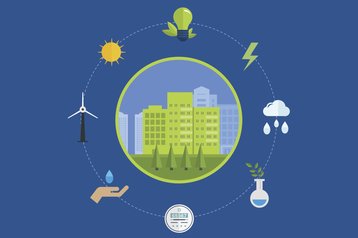Here in the United States, the leaves have already turned gold and red, and fallen to the ground. The air is now crisp and cool, and people have unpacked their sweaters while firing up their heaters. As the cold continues to set in and Winter rears its head with the occasional snow flurry, so does our awareness of one thing - power. It must be so. Our lives depend on it.
In the same manner, power is the life-blood of data centers - the success of any organization and its customers rely on it. However, power is also the one of the greatest expenses a data center operator will manage. With annual levels currently at 200 terawatt-hours of power each year (one-tenth of global use) and rising, it’s not surprising the data center industry is looking for ways to implement renewable energy resources and monitor power consumption to offset this demand.
Automation becomes the backbone of data centers processes
To improve overall outcomes and meet today’s business needs, data centers must automate. Manual processes are too slow and unwieldy to respond to urgencies as they arise, and decision makers often have to rely on assumptions rather than real-time device metrics to solve problems. Without automated tools, efficiency becomes difficult, especially in the device numbers today’s enterprise data center operations deploy in their networks. In fact, a recent survey revealed manual process planners spend up to 40 percent of their time each month just on capacity planning and forecasting.
Although, this does not have to be the case. Data center managers can implement solutions that monitor power and thermal data in real-time requiring no manual intervention. Through these tools, IT teams will be able to track the energy consumption of individual servers and racks, presenting a holistic view of data center operations. Tools like data center management software allow organizations to receive critical insights in real-time and provide predictive insights into the causes of thermal events, component failures, and underutilized devices.
With this added automation, not only will everyday tasks be simplified but IT teams will be able to focus on speed, efficiency, and reducing costs. Data center managers will now be able to act on real-time recommendations versus wasting time on manual trial and error processes to keep operations up, running and thriving.
Automated processes promote data center sustainability
By utilizing a solution that monitors the performance, energy consumption, and thermal levels of individual devices, data center operators can receive insights on subcomponent health, such as memory, power consumption, and CPU utilization. This is a critical component in eliminating costly downtime when responding to any potential issues or failures. Instead, servers can be powered off and on as needed while the server room environment itself can be tracked and systems controlled remotely.
One example of a data center management solution in action is in the wake of a natural disaster – such as the major earthquake that disrupted data center operations at Kyoto University. The resulting damage to the local power utility company led to a 50 percent energy rate increase. Backed by a data center solution, the University was able to receive actionable insights to do things like reroute workloads to servers with the most efficient CPUs and turn off idle servers. These efforts enabled them to cut power consumption at this critical time in their operation.
By implementing power capping policies, IT teams can receive consumption during peak and off-peak times, identify inefficiencies and send alerts about stressed or underutilized devices automatically. It can also help data center operators determine higher temperature set points, and safely raise server room temperatures while monitoring device health.
Sustainability Is ongoing efficiency improvement
Energy management can be likened to money management – you can’t always control what’s coming in, but you can control what you spend. Instead, you can look for ways to prioritize and cut back on things you don’t need. The same goes for how data center managers can tackle their operational efficiencies. Through the use of real-time monitoring tools, IT teams will receive complete visibility into their power spend and in turn, 100 percent control on how they spend it.
Currently, adoption of energy alternatives like wind, solar, and geothermal is isolated and progress is slow. The good news is while organizations bide time waiting for on-site renewable energy solutions to become available, data center operators have access to tools right now that can save power, improve server health, and lower energy costs. And, all can be done sustainably.
Sustainability moves an operation from labor productivity to resource productivity. By automating processes that were once manual in a data center, IT teams can dramatically improve the results with fewer man-hours while saving money in the process.
As the seasons change, the snow falls and 2018 soon becomes 2019, data center operators and managers have much to look forward to. In the meantime, implementing sustainable efficiency practices that use the right tools can significantly reduce operating costs for every type of operation – keeping data centers green all Winter long.


